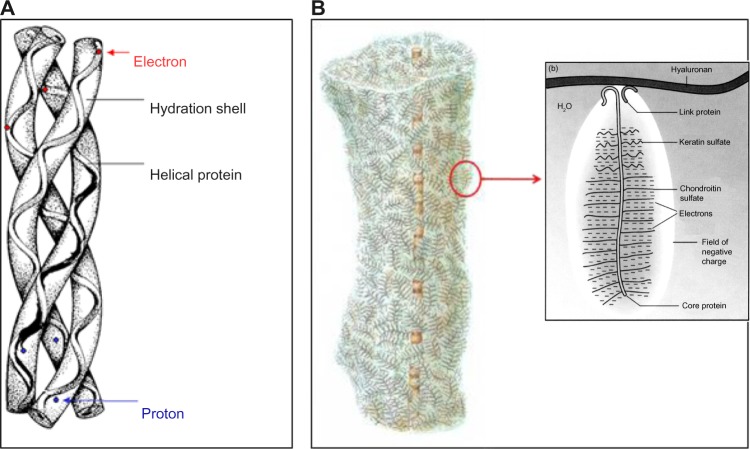Figure 12.
Collagen and ground substance.
Notes: (A) Collagen, the principal protein of the extracellular connective tissue matrix, is a triple helix with a hydration shell surrounding each polypeptide strand. The protein can transfer electrons by semiconduction, and protons (H+) and hydroxyls (OH−) migrate through the hydration shell. These charge movements can be very rapid and are vital to life. (B) Copyright © 2005. R Paul Lee Reproduced with permission from Lee RP. Interface. Mechanisms of Spirit in Osteopathy. Portland, OR: Stillness Press; 2005.67 The ground substance is a highly charged polyelectrolyte gel, a vast reservoir of electrons. Note the collagen fibril embedded in ground substance units known as matrisomes (a term coined by Heine).33 Detail of a matrisome to the right (b) reveals vast stores of electrons. Electrons from the ground substance can migrate through the collagen network to any point in the body. We suggest that they can maintain an anti-oxidant microenvironment around an injury repair field, slowing or preventing reactive oxygen species delivered by the oxidative burst from causing collateral damage to healthy tissue, and preventing or reducing the formation of the so-called “inflammatory barricade”.

